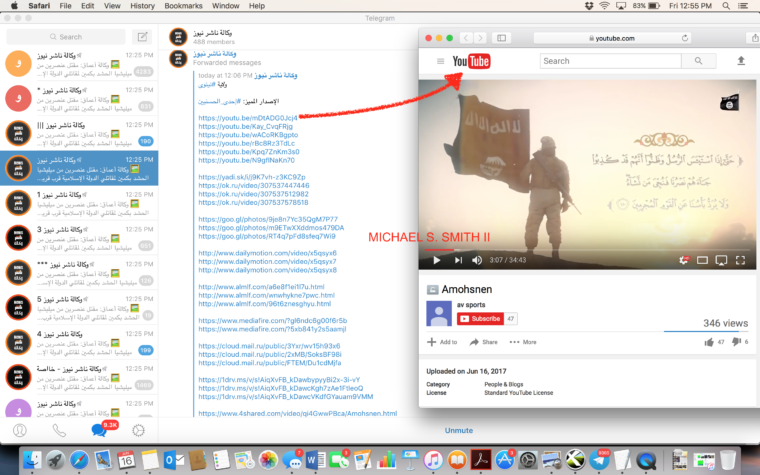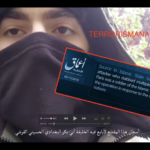TARGET: BAGHDADI
TARGET: BAGHDADI
By Michael S. Smith II
Last week, Syrian media claimed a Syrian strike around Raqqa killed Baghdadi. More recently, Russian officials have stated they are assessing whether Baghdadi was killed during a Russian strike weeks prior.
Syrian media’s claim coincided with unsubstantiated claims that a video released by Islamic State’s Amaq Agency showing the aftermath of a strike in Raqqa last week validated the claim Baghdadi was killed. Indeed, at this writing, no videos released by Amaq, nor any other official Islamic State propaganda have validated claims Baghdadi was either wounded, or killed.
I have not identified any “chatter” that supports the claim Baghdadi was killed in the Telegram Messenger channels and chatrooms I track postings on. Yet it is noteworthy there have been minimal posts that question the validity of reports Baghdadi has been killed. Meanwhile, as indicators go, it is important to consider the topic of unity—group cohesion—was a focus area of the most recent address from Islamic State’s spokesman, released four days ago. However, apart from intensified military campaigns against it in Iraq and Syria, he did not otherwise imply anything else may impact group cohesion.
Here, it also bears mention that there was no indication Baghdadi has been killed in either this week’s issue of the group’s newspaper, al-Naba, that was released yesterday, or the 38-minute video produced by the group’s Ninawah province that was distributed today (the image above is a screenshot of distribution of links to this video on IS-linked Nashir News Telegram channels today).
My assessment of the importance of Baghdadi’s death is as follows:
Just as denying Islamic State control of Mosul and Raqqa without concurrently disrupting its networks far beyond the Levant is unlikely to generate significant disruptive effects on Islamic State’s capacity to pose as a foremost source of threats to global security, Baghdadi’s death is unlikely to prove consequential when it comes to the larger effort to diminish Islamic State’s influence capacity.
Since the fall of 2014, IS has been grooming acquired and prospective supporters to anticipate its senior leaders will be killed. For example, in the fourth issue of Dabiq (Oct 2014), while paraphrasing deceased al-Qa’ida cleric Anwar al-Awlaki, whose mantle—much like that of Usama bin Ladin—Islamic State has attempted to appropriate, the group advised: “… if one wants to know the people of truth, then let him observe where the enemies’ arrows are aimed. Most of them—if not all—are now pointed at the Islamic State, its leaders, soldiers, and subjects.” A similar example of building anticipation leaders will be killed is found in one of several microdocumentaries featuring British Journalist John Cantlie as a tour guide within the “caliphate,” in which an Islamic State figure asserted that killing leaders will not have an impact on the group. In addition, as all but one of al-Baghdadi’s addresses have been delivered in audio versus video format, we see another example of the group working to ensure its supporters are focused on the cause at hand. Support for which is meant to be reflective of the power of the “faith,” and not an iconic appeal achieved by Baghdadi. Of course, for Salafi-Jihadis in the ranks of IS, making Baghdadi an idol of sorts would be considered a form of apostasy.
As I noted in a Time magazine piece published today, various sources, including journalists reporting from Syria and parties whom members of my network were in touch with inside Syria, advised in 2015 that al-Baghdadi was adhering to intense operational security protocols that entailed even eschewing bodyguard details so as to avoid drawing attention to himself when moving about. Plus, it is unlikely Baghdadi would have attended a large meeting like the one various reports indicate was targeted during the Russian strike.
It is possible the claim issued by Syrian media, followed by this newer claim issued by Russian officials may all be a disinformation effort intended to achieve a variety of objectives. If this is the case, it is likely the most important objectives is prompting communications within Islamic State’s network which can be used to refine the picture of Baghdadi’s whereabouts.
If that is the case, this reveals just how difficult it has been for Syrian and Russian intelligence to track senior Islamic State members, despite their and Iran’s ground campaigns against the group.
The fact Russia has long had a jihad theater in its own backyard (ie the Caucasus), where IS claims to have established one of 16 of its 35 wilayat (provinces) located beyond Iraq and Syria, highlights Russian counterterrorism capabilities are not as advanced as the Putin regime would prefer for the world to believe. Further, as I noted in a report published by Vice today, the fact Russia is unable to determine whether Baghdadi was killed in a Russian strike that reports indicate occurred weeks ago strongly suggests this was an opportunistic action—perhaps even a case of coincidence—versus a more targeted strike which involved either intelligence operatives or assets having put eyes on the target before, during and following the strike.
Granted, there a myriad of reasons the Russians might wish to delay such a claim. Notably, this provides operatives and assets opportunities to safely decamp a zone of focus. However, it is doubtful concerns about their safety would trump Putin’s inclination to immediately notify the world Russia has achieved results with its “counterterrorism” program in the Middle East that many journalists will assume are more impactful than US counterterrorism operations in Iraq and Syria to date.
Certainly, there are many other reasons both countries might issue these claims. Indeed, it is possible each have developed intelligence which indicates Baghdadi was killed. Yet it is most curious to see Russia issuing statements concerning such an important item of business that undermine the al-Assad regime’s credibility. Particularly as comments concerning the outcome of the Russian strike are inconclusive.




